Innovative computer vision startup Neurolabs has attracted $1.2M in funds
Neurolabs is a tech startup with an innovative approach to computer vision which completed a pre-seed fundraising round of $1.2M in the summer of 2020.
The startup is looking to democratize computer vision.
It was founded in 2018 by a technical team of computer scientists and mathematicians who have known each other for more than 10 years, having studied together at the University of Edinburgh: Patric Fulop (CTO), Paul Pop (CEO) and Remus Pop (COO).

Neurolabs founders Paul Pop (left), Patric Fulop (middle), Remus Pop (right)
Neurolabs founders
An avid learner, Patrick is currently pursuing a PhD in Machine Learning at The University of Edinburgh. He strives to understand the problems he deals with by putting his inquisitive mind to work.
Paul is a passionate data scientist, looking to use the latest Machine learning algorithms to solve real-world problems.
Remus is interested in Bayesian statistics, deep learning and probabilistic modelling. He is also keen to apply these techniques to real-world problems.
Our technology empowers both small and large customers to implement state-of-the-art Computer Vision applications with minimal incremental resources and costs — no coding required, no tedious data labelling, no image gathering.
Neurolabs Investors
Neurolabs received funds from 8 investors. Here they are:
![]() 7Percent Ventures which invests only in billion-dollar opportunities
7Percent Ventures which invests only in billion-dollar opportunities
![]() Leading investment firm focusing on early-stage Id4 ventures
Leading investment firm focusing on early-stage Id4 ventures
![]() The former head of strategy at Microsoft and a prolific investor Charlie Songhurst
The former head of strategy at Microsoft and a prolific investor Charlie Songhurst
![]() Leading investor Techstart Ventures
Leading investor Techstart Ventures
![]() Deep-tech, seed-stage venture fund Lunar Ventures
Deep-tech, seed-stage venture fund Lunar Ventures
![]() Tech angel investor Hampus Jakobsson
Tech angel investor Hampus Jakobsson
![]() Startup accelerators Data Pitch and Fast Track Malmo.
Startup accelerators Data Pitch and Fast Track Malmo.
Neurolabs Computer Vision offers Object Recognition as a Service
Neurolabs technology platform allows users to build custom image recognition algorithms using 3D models.
The algorithms developed by Neurolabs interpret and understand the world visually. Using images from cameras, the startup’s Computer Vision models accurately identify and classify objects of interest, helping computers “understand” what they “see”.
Computer vision is not a new technology, it began in the late 1960s, as the subject of a PhD thesis at MIT. It is a branch of artificial intelligence. The technology helps to automate visual understanding from a sequence of images, videos, PDFs, or text images with the help of AI and Machine Learning (ML) algorithms. Learn more about Computer Vision here.
Why is Neurolabs’ approach to Computer vision innovative?
In the traditional Computer Vision approach, you had to take many pictures and manually label them. It was expensive and slow.
What Neurolabs is doing differently is to replace the time and resource-consuming traditional approach with a new approach, one which required minimum resources and costs.
Neurolabs is pioneering the use of synthetically generated data to develop object recognition models in a drastically cheaper and faster way than the traditional approach, pushing the accuracy beyond-human levels.
We deliver Computer Vision-powered Object Recognition to help you automate tasks, boost your business, increase productivity and sales while reducing costs.
The company’s innovative technology leverages 3D models, virtual data generation and deep learning models training.
With Neurolabs’ technology, small and large enterprises can implement state-of-the-art Computer Vision applications with minimal incremental resources and costs.
The Neurolabs Computer Vision platform is universally applicable across industries and scales. The technology allows businesses to automate generic object recognition tasks in industries ranging from hospitality to retail and manufacturing.
Benefits and advantages of Neurolabs’ Object Recognition as a Service:
- No coding
- No image gathering
- No data labelling
- Universally applicable
- Cost-effective
- State-of-the-art accuracy
- Easy to integrate
- Minimal client data
- Automate generic object recognition 20X faster and 100X cheaper
Applications of Neurolabs Computer Vision platform
![]() Grocery retail – autonomous checkout with product recognition
Grocery retail – autonomous checkout with product recognition
![]() Hospitality – unattended check-out in cafés/bakeries and canteens
Hospitality – unattended check-out in cafés/bakeries and canteens
![]() Healthcare – utensils inventory, remove human error and prevent foreign object retention post-operation.
Healthcare – utensils inventory, remove human error and prevent foreign object retention post-operation.
![]() Manufacturing – quality control through defect recognition
Manufacturing – quality control through defect recognition
![]() Robotics – localisation and control
Robotics – localisation and control
![]() Agriculture – crop grading and sorting
Agriculture – crop grading and sorting
![]() Recycling sorting
Recycling sorting
Benefits under COVID-19: speed up operations, cut down operational time, reduce time spent in public places, reduce human presence & interaction, ensure a cash-free and safe environment.
Neurolabs is integrated with RPA leader UiPath and blockchain technology rising star Elrond Network.
Neurolabs is a finalist at the annual #UiPathRebootWork and #Automation Awards. Tune in here on the 17th of December to hear CEO Paul Pop explain how RPA developers can leverage the startup’s innovative computer vision platform in a seamless way.
Join the Conversation
We’d love to hear what you have to say.
Get in touch with us on our LinkedIn Page, Facebook Page, Twitter or TikTok.
7 recommendations for naming your future startup
What’s in a name? That which we call a rose by any other name would smell as sweet. William Shakespeare believes names are of no importance. That might be true for people in love but as naming specialist Andra Guțui points out in this article, the name of your startup is paramount. Don’t forget that Google’s first name was Backrub. Read on to learn how to come up with the right name for your startup.
When you are planning to launch a new startup there are a lot of things to take into consideration: business plan, product development, marketing plan, creating the branding part and the list continues.
In many cases, the name of your startup remains the last on this list or the name is chosen by using some personal subjective criteria.
Naming your next startup should be an important task also.
It is not an easy one and that’s why you will discover from this article 7 important recommendations for finding the most suitable name for your future business success:
7 recommendations for naming your future startup
1. Don’t leave the name the last on your “to-do list”
When you have so many things to finish before the big launch, the name seems to be a small part with no important significance for your future startup.
You must always remember that many things you are doing now for your launching, it’s very probable to change them all in two or three years. The only thing that it’s more difficult to change over the years is the name.
My advice is to start with the name, before getting all the other things done. Even if it sounds like a simple task, sometimes it takes longer to find the most suitable naming option.
2. Establish from the start some coherent and logical naming criteria
When we are especially discussing the first startup, the most used naming methods are the following:
- Combining the letters from the founders’ names in order to invent a new word and finally a startup name;
- Choosing a name related to a personal experience from the founders’ lives like the place they are born, their kid’s name, their pets’ names or even a completely unrelated concept to the startup. For example, if the founder is a Star Wars movie fan, naming its future cosmetics online story Jedi Cosmetics may be a wonderful idea for him.
But you must remember that a startup is not only your personal thing. It’s a business which will serve a specific target audience which has various expectations.
The most important naming expectations and criteria to be taken into consideration are the following:
Suggestive for the target audience
Let’s say it again: For the target audience, not for you!
Your potential customers must understand and remember what your startup does. They don’t really care about your dog’s name if they are not able to quickly understand what’s behind your startup’s name.
With the potential of creating imaginary
This rule is applied for suggestive and metaphorical names. In the case of a descriptive startup name, a customer will not have to use imagination to discover more about the products.
Meaningful
Your startup brand name must be correlated with its marketing positioning.
3. Descriptive? Suggestive? Metaphorical? Or invented?
You can choose from many types of startup names, but four of them are the most known, used and easy to understand options. Let’s see more about each of them:
Descriptive names
They directly identify the origin and meaning of the product or service without making use of the client’s imagination.
Examples:
![]()


Descriptive names are functional and can help you with your startup positioning on the market.
As for disadvantages, I can tell you that they tend to be non-creative and unremarkable. Also, they are very difficult to register as trademarks due to their nature of relying on common words which are already used in different trademarked brand names.
Suggestive names
They are indicating an important attribute or differentiation point of your startup, but a customer can figure it up very fast what your start-up does.
Examples:




Suggestive names are the most used naming option over the world.
They can be original and quick to understand and to memorize. Also, they are easier to register them as trademarks.
Metaphorical names
They are usually words with common meanings, but they are applied to businesses completely unrelated to this known meaning. They are the most creative and original naming option. Very easy to register them as trademarks.
Examples:
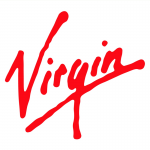

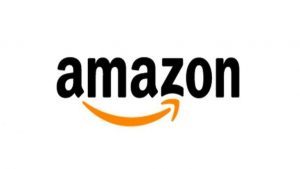
Invented names
Invented names are made-up words which have no meaning in any language other than serving as a new startup name and trademark.
Of course, it’s a unique naming option and you can register them as trademarks right away.
Still, you must take into consideration that it is very difficult to promote them and to make your target audience to understand what your startup really does.
Examples:


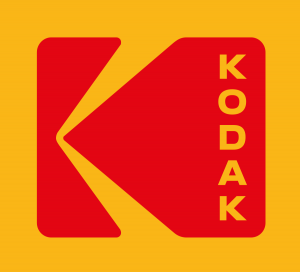
4. Analyze what type of names your competitors have chosen
In some unfortunate cases, people are analyzing the competitor’s names with the single purpose of copying their name or to find a similar naming option.
This is very wrong.
The main objectives in analyzing the existent start-up names on your market are the following:
- Split all your competitors’ names into the four naming types described above;
- See in which category is the highest number of competitors;
- Choose the second most appropriate naming type, not the one chosen by all your competitors. For example: If most of your competitors are choosing descriptive brand names, then go for a suggestive name.
5. Start the naming process with a proper brief
Especially when you are preparing to launch a new startup and you have more than two partners, it’s mandatory to start the naming process with a suitable and complete naming brief.
In this way, you will find your common points, the ideas which need to be avoided and you will avoid arguing with no productive purpose.
You must ask yourselves questions regarding:
- Your startup’s general vision;
- Its future commercial objectives;
- Target audience;
- The type of preferred naming options;
- The linguistic preferences regarding the startup name;
- Competition.
6. Learn a few pronunciation rules
A very important naming criterion is to find a name which is easy to pronounce in the countries where your target audience lives.
There are a few general pronunciation rules you should take into consideration:
- Some letters may be easily confused with others inside of a naming construction. Examples: “M” can be confused with “N”, “R” with “L”, “D” with “T”, “B” with “P” and “S” with “Z”;
- Do not cluster many consecutive consonants into the same word;
- Some letters are very difficult to pronounce if they are followed by certain other letters. Examples: “B” followed by “R”, “L” followed by “T”;
- If you choose a two-word name, check if you can combine them into one single word. Example: Facebook versus Face Book.
7. Trademark screening first!
Do not start the branding process and do not launch your startup before ensuring that your name is available for registration as a trademark!
First, start the procedure of registering your startup name and only after that you can officially launch the new business.
If you do not follow this rule, you may have a lot of problems like:
- Someone else has already registered the same name before and you will be forced to give up your name after you have invested a lot of money in branding and promotion;
- If the name is not registered but it does not belong to you, someone else may register it as a trademark and you will again be forced to rename your entire business.
Naming your future startup is not a simple task.
You can do it yourself if you follow these simple rules or you could work with a naming agency which could help you.
No matter which option you choose, always remember that the name comes first and most probably it will remain with you until the end! All the other things are simpler to adapt and to change over time.
Join the Conversation
We’d love to hear what you have to say.
Get in touch with us on Facebook Group and Twitter.
Agricool – Reinventing the Way Strawberries are Grown
Do you care what goes into your food? Would you still eat it should you know it was sprayed with harmful substances?
Agricool has reinvented the way strawberries are grown.

Agricool is a startup founded by Gonzague and Guillaume, two sons of farmers.
Their childhoods were full of excellent fruits and vegetables, but when they moved to the city, they didn’t want to lose the ability to eat great food. That’s why they invented a system that allows them to grow tasty fruits and vegetables locally and without pesticides, at a price that everyone can afford.
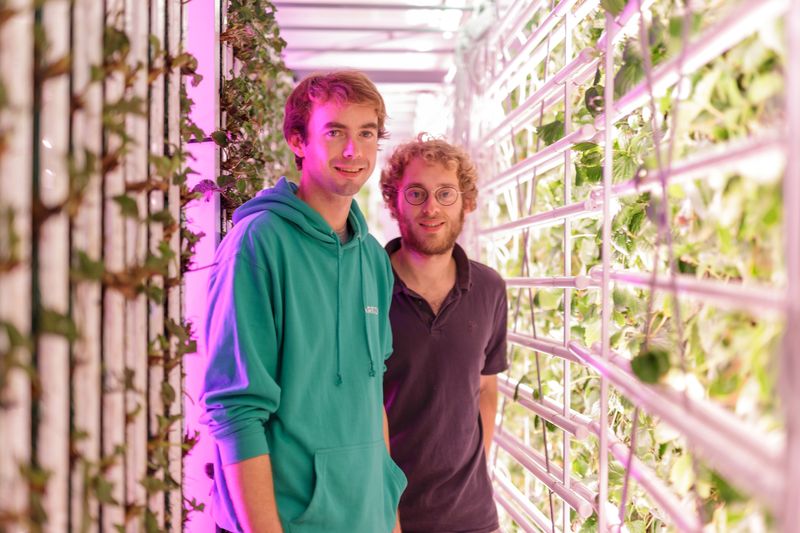
Guillaume and Gonzague in one of their cooltainers / agriculture.gov.fr
Agricool – The Story
They started growing their own strawberries in an apartment in 2015. The strawberries were tasty but the apartment was not an appropriate place for a committed enterprise. They found an old container sitting in the courtyard of Gonzague’s parents’ farm and a great idea was born. The container was a perfect solution for growing their strawberries: it was recyclable, transportable, and able to be placed anywhere. That’s when Agricool took off! A year later Guillaume and Gonzague moved into a proper factory, a new office and hired engineers and agronomists to help them achieve their dream.
One team, one mission, Our mission is ambitious.
To complete it, we need the best, those who are able to reinvent agronomy and engineering as we know it. Those who can challenge the status quo, reinventing the system of food production. We received more than 700 applications and went from two founders to a team of 30 in just one year.

photo: Agricool Facebook Page
Agricool – Reinventing Agriculture with Cooltainers
Agricool has found an innovative way to grow fruits and vegetables which doesn’t harm the environment and is cost effective – the cooltainer.
Here is more on the solution Guillaume and Gonzague have come up with to bring tasty strawberries to Parisiens:
- They grow strawberries in shipping containers called cooltainers; instead of growing on the horizontal, their strawberries grow vertically;
- This allows them to use very little surface area to produce fruits and vegetables – 120 times less than in a field;
- They put their engineering skills to the test and successfully managed to obtain the perfect growing conditions inside the cooltainers in order to produce tasty strawberries;
- Their plants are fed with synthetically-produced nutrients in a closed circuit system which ensures efficiency and sustainability;
- LEDs create the ideal spectrum of light for the plant’s development;
- They consume only renewable energy;
- Their business model created the urban farmer, called the Cooltivator; they encourage and support people to become Cooltivators and grow their own vegetables and fruits;
- The cooltainers are 100% connected; they can analyze all data in real time.
No one wants to eat pesticides anymore. No one wants to harm the planet with the pollution that comes from transporting food. Everyone wants to find real flavour again, the flavour that our grandparents had with their fruits and vegetables. And there’s only one way to do that: to stop wishing and start making it happen.
Guillaume Fourdinier (source)

photo: Agricool Facebook Page
Agricool – Benefits
- Agricool produces in 30 sq. meters the equivalent of what traditional agriculture produces in 4000 sq. meters of fields;
- Agricool strawberries are 100% GMO-free and pesticide-free;
- They use 90% less water than traditional farming and no nutrients are lost to the soil;
- 100% locally produced;
- Because their strawberries are grown in the middle of Paris, Agricool eliminated the need for transportation which makes the business cost efficient;
- Thanks to this solution, they can supply customers with fresh and tasty strawberries all year round.
Agricool – The Future is Bright
Agricool has raised a total of $41.4M (crunchbase.com) to date and is planning to expand to other fruits and vegetables. According to TechCrunch, Agricool plans to launch 100 containers by 2021 in Paris and Dubai and hire around 200 people to help them achieve their mission.
Join the Conversation
We’d love to hear what you have to say.
Get in touch with us on Facebook Group and Twitter.
Startup Marketing – 6 factors for a smart marketing strategy
If you’re working for a startup, you probably don’t have a big budget to implement your marketing strategy. Money is tight and that’s why you need to be smart about how you are spending it.
Here are 6 factors you should take into account for a smart marketing strategy:
1. Customer Retention over Customer Acquisition
Every time you get a new customer – oh, such a rush!
It’s vital to earn more and more customers each month, but before you get all excited looking at the numbers you need to also check your retention rates.
What’s the point of getting new customers if a high percentage of them don’t come back the next month?
Just as you have a new customer acquisition strategy in place you need to leverage a great retention strategy as well.
Why?
Because it’s 5-25x less expensive to keep a customer than to acquire a new one.
That’s the reason Slack has 5x more customer support representatives than salespeople (source).
![]()
Learn how to use email marketing to boost renewals and scale your business.
Here are 14 customer retention strategies via HubSpot:
- Inspire with a mission;
- Empower customers with convenience;
- Leverage personalization;
- Speak to your customers;
- Use gamification and referral programs;
- Create a divide between you and your competitors;
- Use subscriptions to bolster the experience;
- Use experiences to elicit positive feelings;
- Capitalize on social proof;
- Educate your customers;
- Surprise and delight;
- Offer support on the right platforms;
- Thank your customers;
- Apologize when you make mistakes.
2. Go bold & unconventional with your marketing campaigns
Remember the 2018 Skittles Super Bowl ad?
Here it is to refresh your memory:
It’s bold and unconventional for sure, but also a little weird and bizarre, but Skittles was able to pull this off because, well, it’s Skittles.
If this is not your usual cup of tea, here are other bold and unconventional marketing campaigns from Burger King, One Strange Rock and UK’SHONA KWELANGA.
How to design such creative marketing campaigns?
- Always have your customer’s psychographics in mind as a starting point.
- Gather in-depth knowledge of your customer’s pain points, problems and struggles.
- Open your mind to other forms of creativity.
Go outside the boundaries of your industry or your comfort zone and observe how other artists express their art.
Art is nothing but another tool for self-expression and communication with the audience.
Visit art galleries, observe contemporary art installations, learn about innovative architecture, graphic design and illustration.
You can start with Abstract, a Netflix original documentary series highlighting artists in the field of design.
3. Plan for consistency
Interest is shown in effort; talk is supported by actions and trust is earned in consistency.
D Young
A little delivered consistently over a long period of time goes a lot further than a one time hit and run campaign.
Go back to the drawing board and write your marketing plan for the next year. It’s a difficult task because it requires sustained focus and attention but it will be worth the effort.
Another popular saying is “consistency always leads to excellence”. It also leads to refinement of the product (ie: marketing plan), improved communication skills, it builds your reputation and increases brand awareness.

4. Share your journey with your tribe
Growing your startup is a journey, and like any other journey, it has ups and downs.
Share your journey with your fanbase! Don’t create content, document your journey as Gary Vee touted a few years back.
Sharing your startup’s highlights with your fanbase encourages engagement and increases brand awareness.
Celebrate your achievements together and show them your failures – they will be happy to encourage and support you.
People want to cheer for the startup they love or support. They want to feel connected with the team behind the startup. And you want the same because engagement and support lead to sales.
In his book, ‘Marketing Rebellion’, Mark Schaefer tells the story of how Procter&Gamble lost a huge chunk of market share for Ivory, the brand’s signature soap while spending millions of dollars on marketing and advertising.
Why?
Because the brand failed to make an emotional connection with its customer base.
Other soap suppliers run small operations or family businesses and yet they are able to connect with their customers by sharing their mission, their involvement in the community, their efforts to be a sustainable business.
This is what today’s customer says: “I don’t know if I love this brand, but I love the hands that made it.”
It’s about finding your tribe and keeping a close and authentic relationship with it like Seth Godin says in his book ‘Tribes’:
Two different things: a crowd is a tribe without a leader. A crowd is a tribe without communication. Most organizations spend their time marketing to the crowd. Smart organizations assemble the tribe.
Seth Godin

5. Blog about your journey
Blogging is good for SEO. Google loves fresh content that is relevant to your audience.
Question is: should you use blogging platforms like Medium or should you self-host your blog?
If you are just starting out, writing on Medium could be the best solution for your startup.
![]()
No inspiration? Here is when and what to blog about.
Here is the main advantage: Medium has a higher domain authority than your website could ever achieve which means Google will return articles published on Medium before your website content.
A good example is Slack: they hosted the company blog on Medium before moving it on their domain.
![]()
Pros and cons: Medium vs Self-Hosted Blog
Another platform you should consider as a startup founder is Indie Hackers. I found out about this platform from Rand Fishkin who talked about it in one of his LinkedIn posts.
Give it a go and also take into account that you can also sign up to be interviewed.

6. Connect with your fans and early adopters in real life
There’s nothing more important than human connection: we crave it, it keeps us sane, it improves our life quality and even our lifespan.
Make it a goal to connect with your fanbase, prospects and customers on a regular basis. Ask a few well-thought questions (avoid an interrogation!) and listen to what they have to say.
Connecting with your fans and customers reflects positively on your personal brand and it’s a great way to raise awareness, build engagement and trust.
It’s also a source of inspiration, new ideas for the business or marketing efforts.
And it comes at the price of a cup of coffee so what are you waiting for?

Join the Conversation
We’d love to hear what you have to say.
Get in touch with us on Facebook Group and Twitter.
Boost Your Income By Empowering Musicians With This App
Music has been accompanying mankind since age old times. The power of music is at the core of many Greek legends and attribute of various mythological characters: the Sirens lured sailors with their mesmerizing songs; musicians praised to Euterpe, Muse of Music to inspire them with beautiful melodies; Orpheus played his lyre so beautifully that he charmed everyone and everything: men, beasts, trees and rocks.
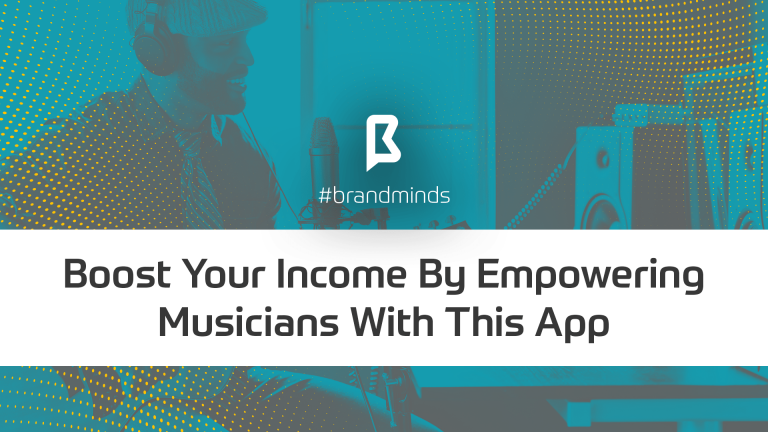
Today music is as powerful as in the times of mythological Gods and musicians are beloved and appreciated for their craft.
But there is another power which can be used to support music and musicians: technology.
Music Traveler: Find The Perfect Space To Make Music
Music Traveler is the app which connects musicians with available music studios in Europe and USA.
Mission
Music has always been important to humankind – culturally, sociologically, and philosophically. Darwin theorized language itself to have originated from music, and in recent years, studies have shown that playing music leads to a longer life. Yet, no musician is born ready to perform without preparation – practice is essential for musicians to both explore and perfect their craft. That’s why the mission of Music Traveler is to:
Promote the creation, appreciation, and interest in music by reducing barriers and facilitating new interactions.
History
Music Traveler was co-founded in 2017 by Aleksey Igudesman, Russian-German violinist, composer, conductor, actor and Julia Rhee, an investor with musical education.
How it works
For Musicians
If you are a musician, you can discover and book the perfect place to make music. Search by date, country and instrument to find available spaces for rent.
Music Traveler is in Austria, Germany, Switzerland, USA, Spain, Italy, Norway and Sweden. You can choose from a wide range of instruments to play your music: grand piano, organ, drum set, electric guitar, violin etc.
Depending on the space, rent prices range from $5/hour to $351/hour.
Activities
As a musician, you can use Music Traveler to find suitable spaces to practice, rehearse, perform, give music lessons, dance, compose and record.
For Hosts
If you manage a music studio, have instruments you can rent or just have enough space, you can become a host and rent out music space to boost your income and empower musicians.
Music Traveler’s Ambassadors
Music Traveler is supported by world-renowned musicians and music lovers such as:
Hans Zimmer, winner of numerous awards for the music scores he wrote for famous Hollywood movies (Interstellar, Inception, Gladiator, The Last Samurai, Rain Man, Thelma & Louise, The Lion King etc)
Billy Joel, singer-songwriter, composer and pianist. Commonly nicknamed the “Piano Man”, Billy Joel has been making music since the 1960s.
Hans Zimmer and Billy Joel are joined by actors Adrien Brody and John Malkovich, musicians Sean Lennon, David Garrett and many others.
Winner of the Best Austrian Newcomer Startup Award
In October 2018, only one year after Music Traveler was launched, the app won the Austrian Newcomer of the Year Award at the Central European Startup Awards.
Join the Conversation
We’d love to hear what you have to say.
Get in touch with us on Facebook Group and Twitter.
This is the AirBnb of One-Day-Trips in Central Europe
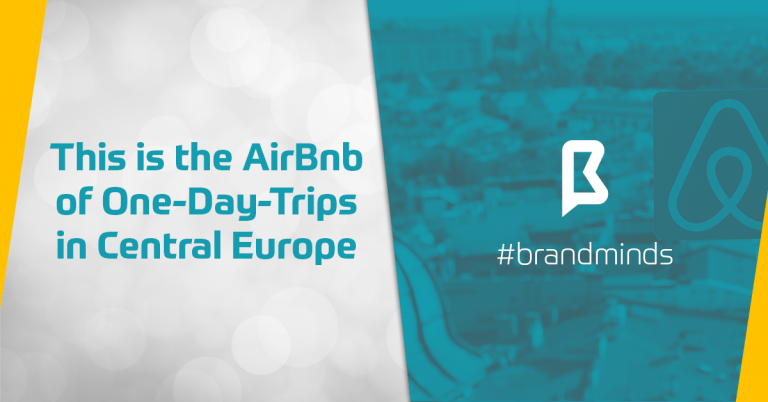
Are you planning to visit Central Europe?
Do you hate carrying luggage or taking directions from your GPS in the search for your next hotel?
Then this is the solution for you!

DayTrip is a platform dedicated to giving travellers an authentic experience by connecting them with local drivers.
DayTrip’s Mission
Every traveller deserves real insight into the cultures of the countries they’re visiting. And every amazing place on Earth deserves to be visited and appreciated. We believe unique local knowledge and real human connection are irreplaceable when it comes to truly comprehending another culture.
About DayTrip:
- The company is a startup created in 2015;
- The founding team is comprised of five passionate travel enthusiasts with years of combined experience in the travel industry and information technology;
- The innovative service was featured in USA Today Travel, The Huffington Post, World of Wanderlust, Travelling Buzz etc;
- Currently Daytrip operates in 9 countries and is steadily growing;
- Since January 2016, the company has transported over 8,000 passengers.
Daytrip is a platform that connects travellers with local drivers who will transport you from one city to the next. We also give you the opportunity to explore sights/attractions along the way.
We drive, you discover.
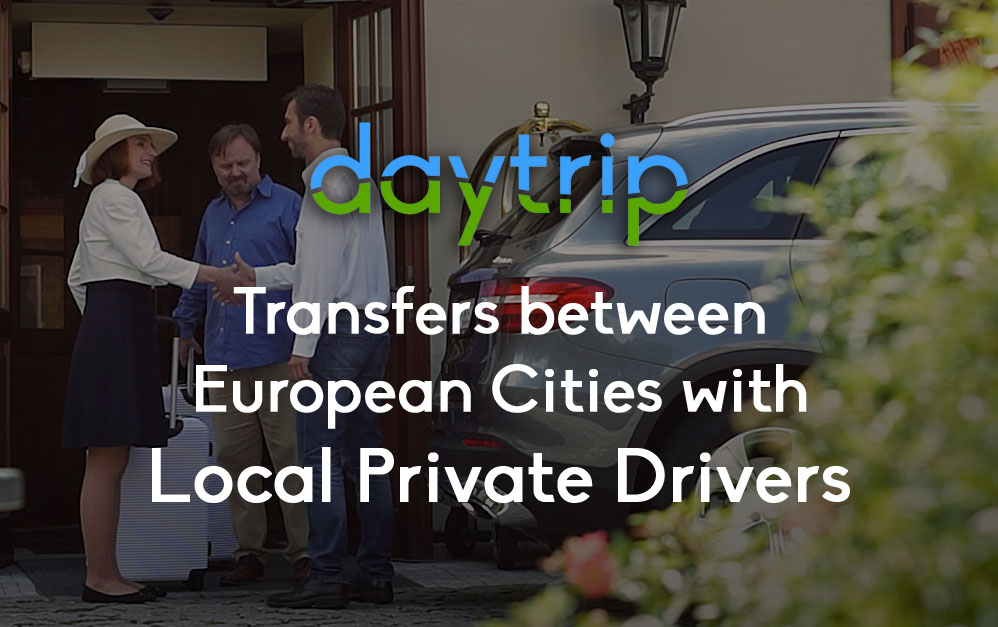
How DayTrip works
- The tourist chooses their origin and destination via the platform, establishing the itinerary and points of interest along the way;
- The platform sends the tourist a reminder with their driver’s name and mobile number a few days before departure;
- The driver meets the tourist at the agreed time and place;
- The tourist receives the vehicle that best fits the number of travellers.
Benefits:
- Side-trips to castles & little towns you wouldn’t be able to see otherwise;
- Reduced transportation time between hotels;
- Gain more time for sightseeing;
- The platform provides you with your own personal tour guide;
- Make the most of your time in each city;
- Receive recommendations according to your interests;
- Avoid expensive flights between cities;
- Get more of the local colours and flavours.
source: https://mydaytrip.com/
How to Skyrocket Your Startup’s Brand Awareness Using Social Media
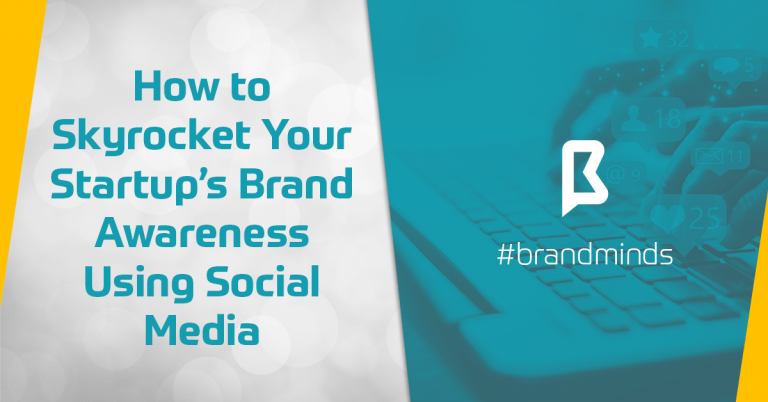
Anyone can sell. But not everyone can create an awesome brand that people actually respond to for years and years.
Nike sells — but what’s kept them at the top of their game all these years is their brand. Being a brand means making a proper, long-term connection with people to the point where they trust you. In 2018 and beyond, one of the most cost-effective and authentic ways to raise awareness of your brand is via social media. It’s where your customers are, after all, and it’s much cheaper than hiring a brand agency.
Social media can be dicey, however. People go there to be social. They don’t want to be sold to. If you market your brand incorrectly, you could turn them away.
So how do you skyrocket your startup’s brand awareness using social media without putting people off?
In this article, we walk you through 6 steps you need to take.

1. Find Your Voice
In life, we get nowhere until we find out voice or feet. Until we answer the question, “who are we and what are our values?” we’ll keep making the wrong decisions.
It’s the same when it comes to your brand on social media. Until you find your voice, your message won’t hit the spot with your intended audience.
To help you define your voice, you need to look at your values. What does your brand stand for? Are you edgy and confrontational? Or are you family-oriented?
Take a look at your target audience, too. What’s their voice and would voice would they respond to?
Your voice will impact how you create all your messages on social media. It will give you consistency, and it will resonate with your audience better.

2. Be Friendly and Be a Part of the Conversation
Remember that people use social media to be social. This is basic stuff, and if you overlook it you’ll find it hard to make that all-important connection with people.
For now, forget about selling. Forget about the CTAs and the links to your landing page. Instead, focus on making a connection with people by being like them.
To that end, make your messages friendly, conversational, and positive. Engage people with questions, show empathy and — where possible — entertain them.
Keep things light, avoid too many promotional messages and refrain at all times from corporate language.
Don’t shy away from humour or slang. Just be natural and focused on building relationships.

3. Make Your Profiles Easy to Read and Understand
Who are you and what does your startup do?
Moreover, where can we go to find out more?
These are basic questions that you should answer in 2-3 sentences in your social media profiles.
When people click on your profiles, these 3 questions are the first ones they want answering. By answering them, you’re educating your audience about who you are and what you do, and you’re also giving them something to do by including link to your website.
Your profiles should be informative and educational, and you should also include a relevant profile picture.

4. Know What To Post and Where To Post It
There are several social media platforms you can use, from Facebook to LinkedIn. Not every single startup needs to be on each platform, and it’s also important that you know exactly what type of content audiences on specific platforms react to.
For example, the content you post on Facebook will be different to the content you post on Twitter. Facebook is a great place to post videos and content that solves your audiences problems, while Twitter is great for posting statistics and data, as well as infographics. It’s also a great place to engage with customers one-on-one, answering their queries.
The better you are at optimizing content for each social media platform, the easier it will be to skyrocket your startup brand’s awareness.
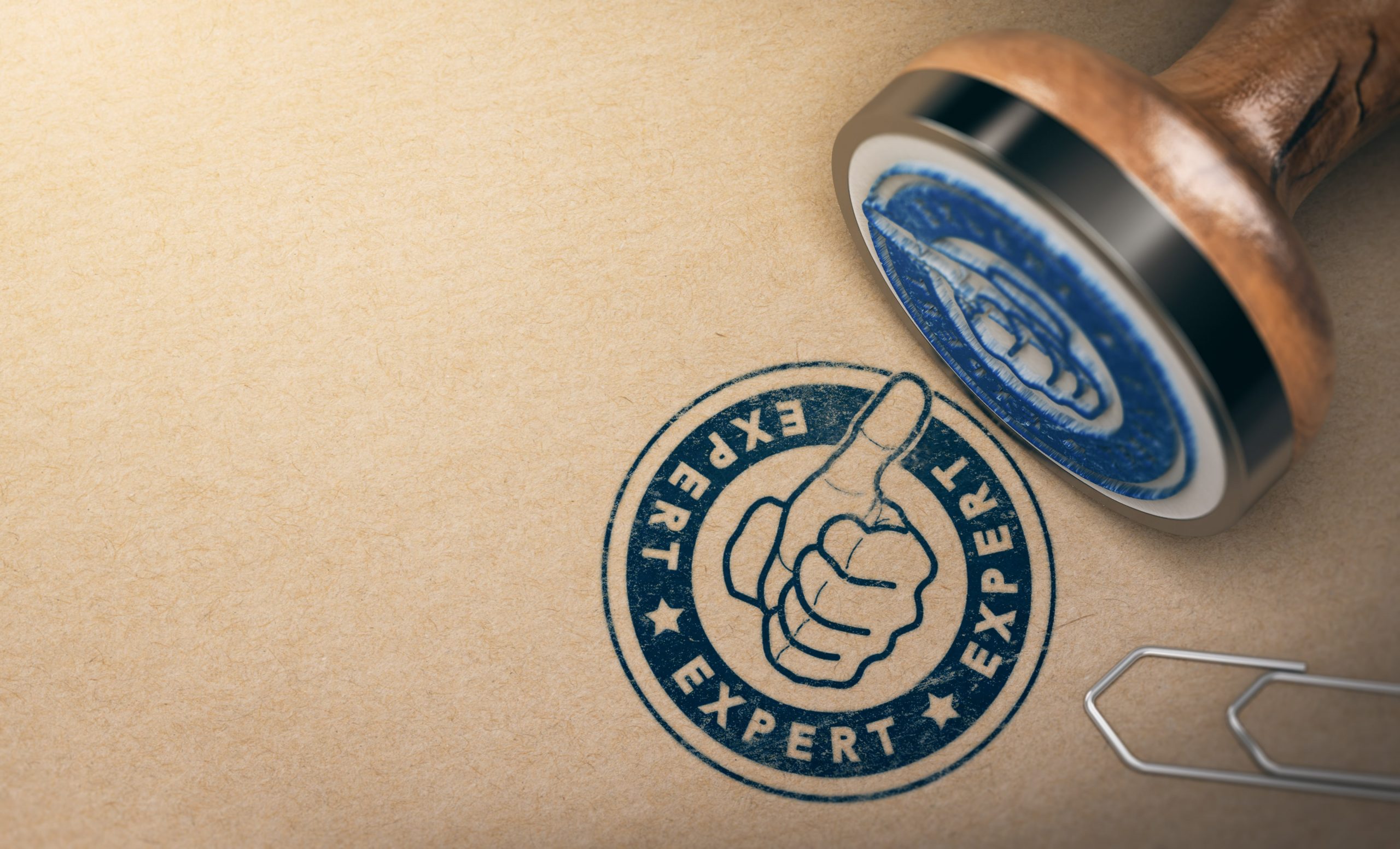
5. Create Value
People respond to valuable content. Research has shown that long-form content is shared more times than short-form content. Long-form content is defined as content that contains more than 1,200 words, and which offers in-depth answers to a specific problem.
The reason it’s shared so much? Simply because it offers value.
Forget going in for the sale for the moment and focus on providing as much value as you can to your social media audiences. What problems can you solve for them today? How are you going to solve them?
Don’t expect anything in return from this — just give and give. The more you give, the more receptive people will be to your brand. Over time, they will learn to trust you, and they’ll see you as the go-to expert in your niche.

6. Skyrocket Your Brand Awareness With Videos
1/3 Instagram users watch videos on Instagram Stories each day, while the social media platform also recently launched IGTV. This allows you to post content to your own channel.
Meanwhile, we consume over 100,000,000 hours of videos on Facebook each day.
One of the best ways to use videos to raise awareness of your brand is to live stream. This might be an interview with an expert, or it could be a Q&A session that you hold on the fly. Live stream works because it’s interactive (people can leave comments that you react to), it’s engaging, and it shows that your brand is authentic. You are live and in the flesh — you’re the real deal.
Conclusions
These are 6 ways to skyrocket your startup’s brand awareness using social media.
Once you’ve found your voice and understood what your audience wants to see, it’s then a case of creating as much value as possible while engaging and connecting with your audience.
Forget the sale for now and focus on building relationships.
If you do this, your brand will grow so much that prospects are more likely to turn into loyal, long-term customers.
